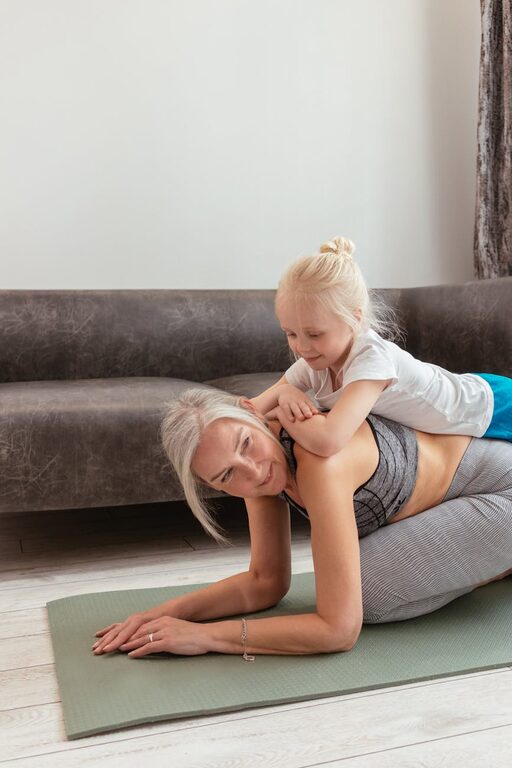Stretching is a simple and effective way to improve your flexibility, relieve muscle tension, and promote better circulation. Whether you’re looking to complement your daily exercise routine or just want to feel more relaxed throughout the day, stretching at home is a convenient option. This beginner’s guide will walk you through the benefits of stretching, essential techniques, and a step-by-step routine you can start today.
Why Stretching Matters
Stretching offers many benefits beyond increased flexibility. Here are some reasons to incorporate stretching into your daily routine:
– Improves range of motion: Stretching helps keep your joints limber and muscles flexible, supporting better movement and less stiffness.
– Reduces muscle tension: It helps release tightness built up from sitting or repetitive movements.
– Enhances posture: Regular stretching strengthens your muscles and helps correct imbalances that cause poor posture.
– Increases blood flow: Stretching promotes circulation, which aids muscle recovery and overall energy levels.
– Relieves stress: Slow, mindful stretches encourage relaxation and reduce mental tension.
Remember, stretching should feel good—not painful. It’s about gradually lengthening muscles, so it’s important to listen to how your body feels.
Setting Up a Stretching Space
You don’t need much space or equipment to start stretching at home. Here’s what you need:
– A quiet, comfortable area: Choose a spot where you won’t be disturbed.
– A yoga mat or soft surface: This cushions your joints and provides a stable base.
– Comfortable clothing: Wear clothes that allow free movement.
– Optional props: A towel, strap, or yoga blocks can help deepen stretches but are not necessary.
Warm Up Before Stretching
Warming up your muscles before stretching is important to prevent injury. You can do 3 to 5 minutes of light activity such as:
– Marching in place
– Gentle walking around the room
– Arm circles or shoulder rolls
The goal is to increase blood flow and prepare your body for stretching.
Basic Stretching Techniques
When stretching, consider the following tips for a safe and effective routine:
– Hold stretches 15-30 seconds: This gives your muscles time to relax and lengthen.
– Breathe deeply and evenly: Focus on steady breathing to help muscles release tension.
– Avoid bouncing: Stretch smoothly and steadily to avoid injury.
– Stretch both sides: Always stretch symmetrically for balance.
– Listen to your body: Stretch to the point of gentle tension, never to pain.
Beginner-Friendly Stretches to Try at Home
Below is a simple stretching routine targeting major muscle groups. Aim to do this routine 3-4 times a week.
1. Neck Stretch
– Sit or stand upright.
– Gently tilt your head to one side, bringing your ear toward your shoulder.
– Hold for 20 seconds and switch sides.
2. Shoulder Roll
– Stand or sit with your back straight.
– Roll your shoulders forward slowly 10 times, then backward 10 times.
3. Cat-Cow Stretch (Spine)
– Get on your hands and knees.
– Inhale, arch your back by lifting your chest and tailbone (Cow).
– Exhale, round your spine while tucking your chin and pelvis (Cat).
– Repeat 5-8 times, moving slowly with your breath.
4. Seated Forward Bend (Hamstrings & Lower Back)
– Sit on the floor with legs extended.
– Inhale, lengthen your spine.
– Exhale, hinge at your hips to lean forward gently, reaching toward your toes.
– Hold 20-30 seconds without bouncing.
5. Butterfly Stretch (Inner Thighs)
– Sit with soles of your feet together and knees bent outward.
– Hold your feet with your hands.
– Gently press your knees toward the floor, feeling a stretch in your inner thighs.
– Hold for 20-30 seconds.
6. Standing Quadriceps Stretch
– Stand tall and hold onto a chair or wall for balance.
– Bend one knee and grab your ankle with your hand.
– Pull your heel toward your buttocks to stretch the front of your thigh.
– Keep your knees close together. Hold for 20 seconds, then switch sides.
7. Calf Stretch
– Stand facing a wall with hands on it.
– Step one foot back, keeping the heel flat on the floor.
– Lean forward slightly, bending the front knee until you feel a stretch in the back calf.
– Hold for 20 seconds, then switch legs.
Tips for Making Stretching a Habit
Consistency is key to gaining the benefits of stretching. Here are some ideas to help you stay on track:
– Set a regular time, such as first thing in the morning or before bed.
– Use reminders or alarms on your phone.
– Combine stretching with other relaxing activities like listening to music or meditation.
– Track your progress by noting improvements in flexibility or ease of movement.
When to Be Careful
Stretching is safe for most people, but if you have an injury, chronic pain, or medical condition, it’s best to consult with a healthcare professional before starting a new routine. Stop immediately if you experience sharp pain, dizziness, or numbness.
Final Thoughts
Stretching at home is an accessible way to improve your flexibility, reduce muscle tightness, and invite calm into your day. Starting with a simple routine and practicing regularly can make a big difference in how your body feels. Remember, the goal is gentle, mindful movement—enjoy the process of tuning into your body and moving with care.
Ready to start? Roll out your mat, take a deep breath, and give these stretches a try today!



